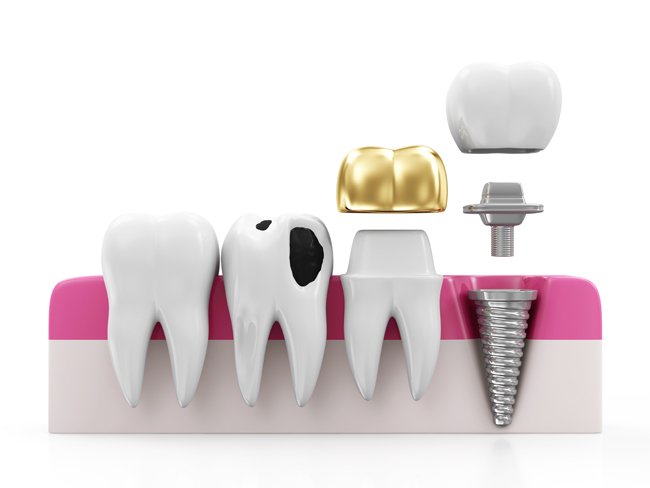Dental Onlays
 Most people have heard of a dental crown, a small ‘cap’ that covers the entire biting surface of the tooth and often down to the gum line.
Most people have heard of a dental crown, a small ‘cap’ that covers the entire biting surface of the tooth and often down to the gum line.
An onlay is a similar type of dental reconstruction — but it only covers the cusp of the tooth (the raised pointy biting part of a tooth.) An inlay covers the areas in between cusps.
The purpose of the onlay is to build up the biting part of the tooth.
What are dental onlays made from?
As with crowns, onlays are available in tooth-coloured porcelain, white composite resin and a gold alloy material. Your dentist will discuss the options and provide a recommendation on the best material for your onlay based on your preference and the quality of the underlying tooth. Porcelain is more prone to chipping so may not be suitable for those who grind their teeth.
What sort of problems are dental onlays used to treat?
This type of restoration is used on pre-molars and molars (back teeth) where part of a crown is damaged or missing or if the cusp of the natural tooth is fragile and at risk of fracturing.
What does dental onlay treatment entail?
Once your dentist has decided this is the most appropriate treatment, you will need two appointments before the treatment is complete.
At the first appointment, the dentist will make an impression of the area where the onlay will go. During this appointment the dentist will use anaesthetic to numb the local area and prepare the tooth by removing any decay or damaged dental restoration material.
The dentist will then make an impression of the tooth and surrounding area using dental putty to ensure the onlay fits perfectly. The dentist will also make a note of the colour of your natural tooth and the surrounding teeth. A temporary filling may then be applied until the onlay is ready to be fitted.
The onlay filling itself is created at a dental laboratory by a highly skilled dental technician. Using the impression of your tooth that was created by the dentist, they create a plaster or stone cast of your natural tooth.
They work meticulously to ensure that the onlay is the correct dimension and colour to perfectly fit to and match your tooth.
It is usually ready to be fitted approximately 2 weeks after the impression is taken. The dentist will then bond the onlay into place and make small adjustments to make sure your teeth sit together properly when closed and it is comfortable to bite on. Both parts of the procedure are quick and painless.
What are the advantages of dental onlays?
This customised dental restoration can help restore the full function of the chewing surface of the molars and pre-molars by mimicking the natural shape of these teeth.
Dental onlays are very robust and durable and last much longer than ‘standard’ fillings. They can also help to prevent the tooth from developing any secondary decay in the future.







